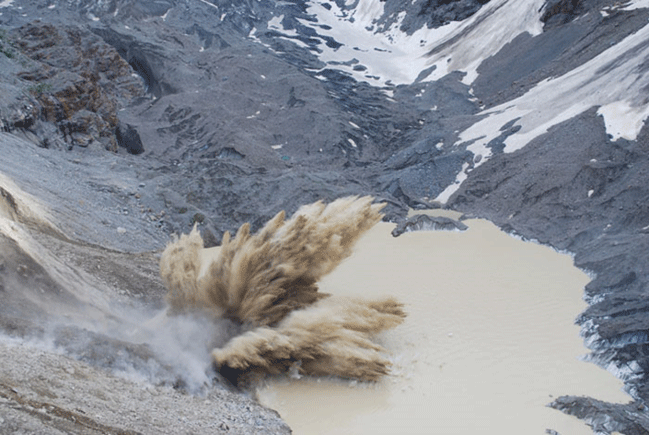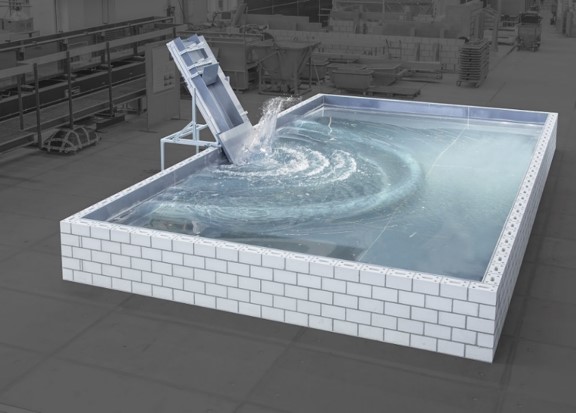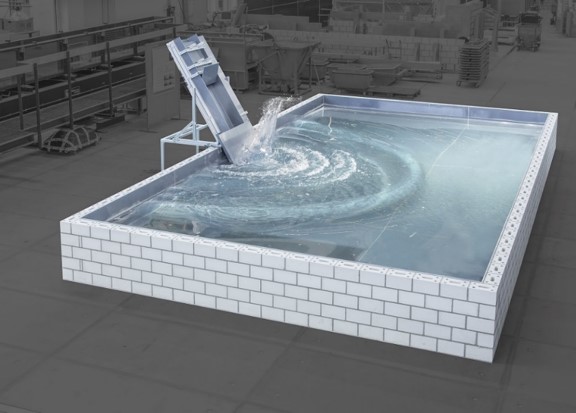Menacing Waves: Enhancing the Risk Assessment for High-Altitude Storage Lakes by Estimating the Impact of Impulse Waves
Impulse waves, generated by avalanches, ice- or rockfalls, may seriously impair the reservoir of a hydropower plant. In some cases they even overtop or damage the dam and trigger hazardous flood waves. Examining their potential impact is therefore an inevitable part of a comprehensive hazard assessment for hydropower plants in alpine areas. The Laboratory of Hydraulics, Hydrology and Glaciology (VAW) at ETH Zurich advanced within the first phase of the SCCER-SoE the overall understanding of these processes particularly with regard to spatial impulse wave propagation. In the second phase, large scale field tests will be conducted to expand the current knowledge, which is based on modelling and laboratory experiments.
Generally, a hazard assessment for hydropower plants is carried out in three steps. Step one includes the definition of the volumes of potential landslides, rockfalls or avalanches, their point of origin, as well as their propagation pathways. In step two, the potential slides and their impact characteristics when impinging the reservoir are modelled. The third step deals with the estimation of the resulting impulse waves. Whereas step two may be covered with well-established slide-models based on field data, steps one and three are still challenging and contain large uncertainties.
A comprehensive hazard assessment of landslide generated impulse waves requires a multidisciplinary approach. Geologic and geotechnical expertise is needed to identify unstable slopes and to quantify key slide characteristics at the impingement, including slide velocity and mass. Based on these input parameters, a hydraulic analysis yields spatial wave height information, which depends on the wave propagation distance and direction. With the predicted wave height at a certain impingement location within the reservoir, the run-up and potential overtopping volumes are estimated. General applicable prediction equations developed from scale model tests provide a straightforward approach to determine the magnitude of impulse wave events and their impact along the shoreline. In addition, laboratory experiments were conducted to understand the process of impulse wave height decay along its propagation route. The free water surface was tracked with a videometric measurement system gathering spatial data of the entire water surface elevation and the impulse wave propagation process in an unprecedented density.
For the second phase of the SCCER-SoE an innovative test-setup is planned at where artificially generated impulse waves will be studied in prototype. For the production of the impulse wave, a large container will slide on guiding rails at high speed into the reservoir. The propagation of the impulse waves and the run-up in the surrounding areas and dam will be measured. The experimental data will allow a thorough calibration and validation of the existing computational approach and numerical models. Finally, combining the results obtained by the analytical and experimental analyses, new guidelines to evaluate the hazard associated to impulse waves will be defined.




